This comprehensive research aims to provide an in-depth understanding of fear, death anxiety, and the path to fearlessness, with a particular focus on Eastern philosophies, clinical perspectives, and practical strategies for individuals seeking to conquer their fears and approach death with grace and understanding.
Fear is just because we are living only with Our mind, misidentifying ourselves as a livewire. Our fear is always about what’s going to happen next, which is always about which does not have any existence. Our fear is about the non-existent, imagination, illusion etc. all acknowledged as Maya (illusory energy) by revealed scriptures. We are always suffering either what happened yesterday or what may happen tomorrow. Our suffering is always about that which does not exist, simply because we’re not ingrained in reality. We’re always with our mind, which basically functions as acceptor or denier which is also part of memory and imagination. Both the imagination and memory are in one way the hallucination, because both of them don’t exist right now, which is the basis of Our fear. If we are ingrained in reality, there would be no fear. Fear in one sense can be called insanity, because it just a hallucinatory energy of mind or believing in what does not exist.
What fear does is it puts boundaries around us. It is because of fear that we build boundaries all the time. If we put boundaries and restrict the area of Our life, to feel safe or even we may be safe but the problem is, are we really safe from the common problem of life like birth, diseases, old age or death? Are we protected from the repeated cycle of birth, diseases, old age and death? If yes then, that’s real protection! If not, then we should think of looking out of the box boundaries we created.
Fear and death are universal experiences that shape human existence. In this article we dig into the profound insights offered by Eastern philosophies, particularly Hinduism (based on Vedic literature), in understanding and conquering fear, as well as redefining our perspective on death. Drawing from ancient texts, teachings, and contemporary interpretations, we explore the nature of fear, the fear of death, and the ways to attain fearlessness. It investigates the impact of fear on our lives, the psychological aspects of fear, and the quest for a fearless existence. Additionally, here we examine the concepts of self, consciousness, and the afterlife from an Eastern philosophical standpoint, shedding light on how these beliefs contribute to a fearless approach to death. We also delve into the clinical aspects of death anxiety and the psychological perspectives that offer a deeper understanding of human responses to mortality. Furthermore, we explore various methods and techniques derived from Vedic philosophies that provide practical guidance for overcoming fear and embracing the inevitable, death.
- Fear: A Comprehensive Analysis
1.1. Fear in the Mind
Fear is a complex and universal human emotion that plays a significant role in shaping our thoughts, actions, and perceptions of the world. In this section, we will explore the nature of fear from both the Eastern Vedic perspective, rooted in ancient Hindu philosophy, and the modern psychological viewpoint. By examining how these two perspectives conceive and process fear, we aim to uncover differences and similarities, shedding light on the profound insights offered by Eastern Vedic thinking. We will also draw upon relevant insights from Vedic texts and contemporary psychological studies to provide a comprehensive analysis.
The Eastern Vedic Perspective: Eastern Vedic philosophy, as exemplified in Hinduism, offers a unique perspective on the nature of fear. It views fear as a product of ignorance and attachment to the material world. In this perspective, fear arises from a misunderstanding of one’s true nature, the eternal self (Atman), and an excessive focus on the transient aspects of existence. Vedic texts like the Bhagavad Gita and the Upanishads delve into the idea that conquering fear involves realizing one’s divine nature and detaching from the temporal, ever-changing world.
The Modern Psychological Viewpoint: Modern psychology approaches fear as an integral part of the human experience. Psychologists have extensively studied fear, breaking it down into different types, such as rational and irrational fear, and exploring its neurobiological and cognitive underpinnings. Fear is often viewed as a natural response to perceived threats or dangers, rooted in the brain’s evolutionary mechanisms. Contemporary psychological studies have identified the amygdala’s role in processing fear and the formation of fear memories.
Differences and Similarities: While the Eastern Vedic perspective sees fear as arising from ignorance and attachment, modern psychology emphasizes the evolutionary and cognitive aspects of fear. However, there are notable similarities between these viewpoints. Both recognize the role of the mind in shaping fear. Eastern Vedic philosophy emphasizes self-realization and a shift in consciousness to overcome fear, which has resonances with modern psychological approaches like cognitive-behavioral therapy (CBT), which seeks to alter thought patterns to mitigate fear responses.
Relevant Insights: In the Bhagavad Gita, Lord Krishna imparts wisdom to Arjuna about conquering fear by understanding the eternal self and detaching from worldly desires.
Contemporary psychological studies, such as those by Joseph LeDoux and Daniel Goleman, delve into the neurological and emotional aspects of fear, offering insights into how the mind processes fear.
By examining fear from both the Eastern Vedic perspective and the modern psychological viewpoint, we begin to uncover the intricacies of this profound emotion and gain a more holistic understanding of how it influences our lives. In the following sections, we will continue to explore various dimensions of fear and its impact on individuals, delving into the role of imagination, the psychological impact of fear, and the ways in which fear can serve as a boundary in our lives.
1.2. The Role of Imagination
Imagination is a powerful mental faculty that can be instrumental in generating and perpetuating fear. In this section, we will analyze the role of imagination in fear, comparing the perspectives of Eastern Vedic philosophy and modern psychology. By understanding how these two viewpoints perceive the role of imagination in fear, we can gain insights into how our thoughts and mental imagery contribute to our experiences of fear. Additionally, we will explore real-life examples and case studies that illustrate the influence of imagination on fear in both contexts.
The Eastern Vedic Perspective: In Eastern Vedic philosophy, imagination is considered a key factor in the generation of fear. The mind, according to this perspective, has the capacity to create illusions and delusions. Fear often arises from projecting negative future scenarios, clinging to false identities, and being attached to material desires. For example, the fear of loss or death is often rooted in the imagination of a self that is impermanent also known as Dehatmikabudhi (considering oneself to be this material body), separate from the absoulete, and susceptible to destruction. Overcoming fear in this context involves recognizing the illusory nature of these mental constructs and realizing the eternal self, Atman.
Modern Psychological Viewpoint: Modern psychology recognizes the significant role of imagination in generating and perpetuating fear. Imagination is closely linked to anxiety disorders and phobias, where individuals often engage in catastrophic thinking, imagining the worst possible outcomes of a situation. Cognitive-behavioral therapy (CBT), a widely used approach in modern psychology, targets these cognitive distortions by challenging and altering irrational thought patterns. Imagination can also play a role in the formation and maintenance of post-traumatic stress disorder (PTSD) by repeatedly reimagining past traumatic events.
Comparing Perspectives: Both Eastern Vedic philosophy and modern psychology agree on the influential role of imagination in generating fear. They differ primarily in their methods of addressing this issue. Vedic philosophy seeks to transcend the illusory nature of imagination through self-realization and detachment from worldly attachments. Modern psychology, on the other hand, employs therapeutic techniques to reframe and modify negative thought patterns.
Examples and Case Studies:
- Eastern Vedic Perspective: In Vedic philosophy, the fear of death is a common theme. By recognizing the imaginative aspect of fearing death, individuals can embark on a spiritual journey to realize their eternal nature. Case studies often involve personal transformation through meditation, self-realization, and detachment from material possessions.
- Modern Psychological Perspective: In the context of modern psychology, individuals with specific phobias, such as the fear of flying, engage in catastrophic thinking, imagining plane crashes and disasters. Through exposure therapy and cognitive restructuring, many individuals can conquer their fear and comfortably board airplanes without excessive anxiety.
By considering the role of imagination in fear from both Eastern Vedic philosophy and modern psychology, we gain a deeper understanding of how our mental processes contribute to the experience of fear. In the subsequent sections, we will further explore the psychological impact of fear, its function as a boundary, and the concept of a hallucinatory mind, providing a more comprehensive analysis of this complex emotion.
1.3. The Psychological Impact of Fear
Fear is a potent emotion with profound psychological implications. In this section, we will examine the psychological effects of fear, encompassing its impact on mental health, behavior, and overall well-being. We will draw comparisons between the Eastern Vedic perspective and contemporary psychological theories regarding the effects of fear. To support our analysis, we will present relevant studies and research findings that shed light on these psychological impacts.
The Eastern Vedic Perspective: In Eastern Vedic philosophy, fear is seen as a product of ignorance and attachment. The fear of impermanence, suffering, and death often stems from the mistaken identification of the self with the physical body and material possessions. This misidentification creates a cycle of suffering, which includes anxiety, attachment, and aversion. Fear is seen as a destructive force that obstructs one’s spiritual evolution. Overcoming fear in the Vedic tradition involves self-realization, understanding the eternal nature of the self (Atman), and transcending worldly attachments.
Contemporary Psychological Theories: Contemporary psychology offers several theories that explain the psychological impacts of fear:
Fight or Flight Response: Fear triggers the body’s “fight or flight” response, releasing stress hormones like adrenaline and cortisol. This physiological reaction can lead to increased heart rate, muscle tension, and heightened arousal, which may have long-term health consequences if chronic.
Post-Traumatic Stress Disorder (PTSD): Fearful experiences, particularly those involving trauma or life-threatening events, can lead to the development of PTSD. Individuals with PTSD often experience flashbacks, nightmares, and extreme stress reactions.
Anxiety Disorders: Fear is at the core of various anxiety disorders, such as generalized anxiety disorder, social anxiety disorder, and panic disorder. These conditions can significantly impact daily functioning and quality of life.
Behavioral Responses: Fear can lead to avoidance behaviors, where individuals withdraw from situations or stimuli that trigger fear. This avoidance can limit life experiences and opportunities for personal growth.
Comparing Perspectives: While Eastern Vedic philosophy emphasizes the spiritual and existential dimensions of fear, and takes different psychological impacts like fight or flight response, behavioral response etc. as a response by modes of material nature based on the individual’s level of consciousness whereas, contemporary psychology focuses on the physiological, behavioral, and cognitive aspects. Both perspectives acknowledge the detrimental impact of fear on well-being, but they propose different methods of addressing it. Vedic philosophy suggests that understanding one’s true nature and achieving spiritual growth can lead to permanent fearlessness, while modern psychology relies on temporary therapeutic interventions, cognitive restructuring, and exposure therapy.
Studies and Research Findings: Numerous studies support the psychological impacts of fear. For instance, research has shown that chronic fear and stress can lead to a range of physical health issues, including cardiovascular problems, weakened immune function, and gastrointestinal disorders.
In summary, fear has multifaceted psychological effects that encompass physiological, behavioral, and emotional dimensions. While the Eastern Vedic perspective addresses fear’s existential and spiritual consequences, contemporary psychology delves into its cognitive and emotional aspects. Both perspectives contribute to our understanding of the intricate nature of fear and offer different approaches to mitigate its psychological impact.
1.4. Fear as a Boundary
Fear can be a powerful boundary that constrains personal growth and potential. In this section, we will delve into how fear functions as a boundary and impedes an individual’s progress. We will draw comparisons between the perspectives of Eastern Vedic philosophies and modern thinking on overcoming these boundaries. To illustrate these ideas, we will provide stories and examples of individuals who have transcended fear as a boundary.
Fear as a Boundary – The Eastern Vedic Perspective: In Eastern Vedic philosophy, fear is often associated with ignorance, attachment, and the ego. It is considered a fundamental impediment to spiritual growth and self-realization. The fear of death, change, and impermanence can create a rigid boundary that keeps individuals trapped in the cycle of suffering. Overcoming this boundary involves shedding attachments to the material world, recognizing the eternal nature of the self (Atman), and embracing a fearless existence. Ancient texts, like the Bhagavad Gita, provide guidance on transcending this boundary through devotion, knowledge, and selflessness.
Fear as a Boundary – Modern Thinking: Modern psychology and self-help literature also acknowledge fear as a boundary, albeit from a different perspective. Fear, in this context, is seen as a psychological barrier that limits personal growth and potential. Common manifestations include the fear of failure, rejection, or the unknown. Modern approaches to overcoming these boundaries involve techniques such as exposure therapy, cognitive restructuring, and positive visualization. Personal development literature emphasizes the importance of confronting one’s fears, setting goals, and pushing past one’s comfort zone to achieve personal growth.
Illustrative Examples:
- The Story of Arjuna: In the Bhagavad Gita, Arjuna faces an existential crisis and is paralyzed by fear on the battlefield. Lord Krishna imparts wisdom to him, encouraging him to overcome his fears and fulfill his duty as a warrior. Arjuna’s transformation from fear and doubt to fearless action illustrates the Vedic approach to transcending fear as a boundary.
- Eleanor Roosevelt’s Quote: In modern thinking, Eleanor Roosevelt’s famous quote, “You gain strength, courage, and confidence by every experience in which you really stop to look fear in the face,” encapsulates the idea of fear as a boundary and the importance of confronting it. Her life, marked by numerous achievements despite her fears, serves as an example of overcoming such boundaries.
Comparing Perspectives: While both Eastern Vedic philosophies and modern thinking recognize fear as a boundary, they differ in their approaches. Vedic philosophy addresses fear as a spiritual impediment, advocating self-realization and detachment. Modern thinking focuses on material level, psychological barriers and employs strategies for confronting fears through gradual exposure and cognitive reframing.
Fear can indeed function as a boundary, whether from a spiritual or psychological perspective. Stories and examples from both Vedic philosophy and modern thinking illustrate that individuals can transcend these boundaries through self-awareness, resilience, and personal development. The choice of approach, for eternity be it spiritual or material- temporary in nature psychological, depends on an individual’s beliefs and goals.
1.5. The Hallucinatory Mind
The notion of the mind’s capacity to create hallucinations or distorted perceptions under the influence of fear is a fascinating topic that can be explored through the lenses of Eastern Vedic philosophies and modern psychology. In this section, we will delve into how these two perspectives interpret the hallucinatory mind, taking into consideration cultural and historical factors. We will use relevant research and examples to support our comparisons, aiming to provide a balanced and well-rounded perspective.
The Hallucinatory Mind in Eastern Vedic Philosophies: In Eastern Vedic philosophies, the mind’s role in creating hallucinations or distorted perceptions is often linked to the concept of Maya. Maya is the illusory nature of the material world, which can deceive individuals into perceiving it as the ultimate reality. Fear, as one of the emotions born out of attachment to the material world, can further delude the mind. Ancient texts like the Upanishads and Vedanta Darshan suggest that the mind, when under the influence of fear, may create distorted perceptions, making individuals mistake the impermanent for the permanent. The pursuit of self-realization and understanding the true nature of reality is seen as the way to dispel these hallucinations.
The Hallucinatory Mind in Modern Psychology: Modern psychology approaches the concept of the hallucinatory mind under the framework of cognitive psychology and neuroscience. When individuals experience intense fear, their minds can generate perceptual distortions or hallucinations. For example, during a traumatic event, individuals may recall seeing vivid but inaccurate details. Psychological theories, such as the cognitive bias theory, suggest that fear can lead to cognitive distortions, where individuals interpret ambiguous or neutral stimuli as threatening. Research in this field indicates that fear can impact sensory perception and memory recall.
Comparative Analysis: Cultural and Historical Factors: Eastern Vedic philosophies embed the concept of the hallucinatory mind within their spiritual and philosophical frameworks and writings of Profound Risihimuni, shaped by millennia of cultural and historical evolution. In contrast, modern psychology, with its empirical and scientific foundations, approaches this concept from a psychological and neurobiological standpoint. The interpretation of fear-induced hallucinations is influenced by these cultural and historical factors.
Contrasting and Complementary Insights: Eastern Vedic philosophies emphasize transcending the illusion of the material world through self-realization and spiritual practices, giving less significance to its mechanism, instead appeal the treatment of problem to be on topmost priority. Modern psychology provides insights into the psychological mechanisms underlying fear-induced perceptual distortions. While they offer different perspectives, they are not necessarily contradictory. The Vedic perspective focuses on ultimate truth and self-realization, while psychology focuses on cognitive processes and mental health.
Examples: In the context of the hallucinatory mind, an example from Vedic philosophy could be the idea of the “cosmic illusion,” where individuals mistake the transient world for the ultimate reality due to fear and attachment. In contrast, a modern psychological example could be a soldier’s account of experiencing auditory hallucinations during combat due to intense fear.
In conclusion, the concept of the hallucinatory mind under the influence of fear is intriguingly approached from distinct vantage points in Eastern Vedic philosophies and modern psychology. While their methodologies and perspectives differ, they provide valuable insights into understanding how fear can shape human perception and cognition. Recognizing these different viewpoints can enrich our comprehension of the complexity of fear-induced hallucinations.
- Fearlessness in Eastern Philosophy
2.1. Fearlessness as a Virtue: In Eastern philosophy, particularly within the context of Vedic scriptures, fearlessness is considered a virtuous quality that individuals should strive to attain. Fearlessness is rooted in the understanding of the true nature of the self (atman) and the realization of the impermanence of the material world. It is seen as the absence of fear, which often arises from attachment to the transient aspects of life. The Bhagavad Gita, a sacred scripture, teaches that fearlessness is a quality that arises when an individual understands their eternal nature and the unity of all beings. This realization leads to a profound sense of inner peace and courage in the face of life’s challenges.
2.2. Overcoming Fear for Spiritual Growth: Eastern philosophies stress that overcoming fear is integral to material progressions like financial, political, educational, social, personal etc., together with spiritual growth and self-realization. The journey towards fearlessness involves shedding attachments to material possessions and the ego, which are often the sources of fear. By letting go of these attachments, individuals can experience spiritual liberation. Practices like meditation, self-inquiry, and devotion are advocated to transcend fear. The understanding of the cyclical nature of life and death, as explained in the concept of samsara, also plays a crucial role in lessening fear, as it teaches that death is not the end but a transition in one’s eternal journey.
2.3. The Fearless Bhakta (Devotee): Within Eastern philosophies, especially in the Bhakti tradition, a fearless devotee or Bhakta is characterized by unwavering devotion and surrender to the divine. Such devotion is seen as a way to conquer fear, as the Bhakta entrusts their fears and anxieties to the divine, believing in divine protection and guidance. The Bhakta strives to maintain a deep, loving relationship with the supreme almighty Sri Krishna, which in turn leads to a sense of security and fearlessness.
2.4. The Role of Bravery, Cautiousness, and Foolhardiness: Eastern philosophies often distinguish between different forms of courage. Bravery, characterized by the absence of fear, is highly regarded when it is rooted in wisdom and virtue. It involves confronting challenges and adversities with a composed and fearless mind. Cautiousness is also considered a form of courage, where individuals exercise prudent judgment and restraint when facing potentially harmful situations. Foolhardiness, however, is seen as the absence of wisdom and discernment and is not praised. It represents recklessness rather than true fearlessness.
Comparative Analysis with Modern Thinking: Fearlessness in Eastern philosophy is closely intertwined with spiritual and metaphysical concepts, emphasizing the realization of one’s divine nature and the transient nature of the material world. In contrast, modern thinking often approaches fearlessness from a psychological standpoint, focusing on techniques to manage fear and anxiety in everyday life. Both perspectives can be complementary, as modern psychological methods can help individuals alleviate fear and anxiety, which can then create a more receptive mindset for spiritual growth. However, the underlying motivations and philosophies differ significantly between the two, highlighting the unique contributions of each perspective in the pursuit of fearlessness.
Fearlessness in Eastern philosophy is more than the absence of fear; it is a virtue that stems from a deep understanding of the self, the divine, and the nature of reality. It plays a pivotal role in the spiritual growth and development of individuals, leading them to transcend the limitations of fear and attachment. By embracing practices and principles that promote fearlessness, individuals can attain inner peace.
- The Hindu (Vedic) Concept of Death
3.1. The Self as Eternal: In Hinduism, the concept of death is deeply intertwined with the understanding of the eternal nature of the self, often referred to as the atman. Vedic Literature teaches that the atman is immortal, unchanging, and beyond the cycle of birth and death. The physical body is seen as temporary, while the atman is eternal. When a person dies, it is believed that the atman continues its journey, based on its karma (activity and level of consciousness) being reborn in a new body according to the doctrine of samsara. This view of death as a transition rather than an end provides solace and lessens the fear associated with mortality.
3.2. Principles for Overcoming Death Anxiety: Reveled Vedic literatures offers several principles and practices to help individuals overcome death anxiety:
- Karma: The law of karma teaches that one’s actions in this life influence the circumstances of future lives. By leading a virtuous life, individuals can shape their future positively, reducing anxiety about the unknown aspects of the afterlife.
- Detachment: Detachment from material possessions and the ego helps individuals transcend the fear of losing these attachments in death. The understanding that nothing in the material world is permanent allows for a smoother transition into the afterlife.
- Meditation and Self-Realization: Through meditation and self-realization practices, individuals can connect with their inner real self and understand their eternal nature, which helps alleviate fear of death.
3.3. Vedic Prayers for Fearlessness: The Vedas, ancient sacred texts of Hinduism, contain numerous prayers and hymns aimed at invoking fearlessness. Some of the most renowned are Sri Nrisimha Kavacha, Narayana Kavacha, Mahamrityunjay etc. As one of the Vedic saying goes on “Asato Ma Sadgamaya … ” prayer, which translates to “Lead me from the unreal to the real, lead me from darkness to light, lead me from mortality to immortality.” This prayer encapsulates the Hindu aspiration to move from the transient world to the eternal realm and symbolizes the quest for fearlessness. These Vedic prayers serve as tools to align the mind and spirit with the idea of transcending death.
Comparative Analysis with Modern Thinking: The Vedic concept of death contrasts with many modern Western perspectives, which often view death as a final and fearful endpoint. In Hinduism, death is seen as a transition and an integral part of the eternal journey of the soul. Principles like karma, detachment, and meditation, while rooted in spirituality, can also be seen as psychological coping mechanisms that provide comfort and reduce death anxiety. In modern psychology, techniques for managing death anxiety often involve cognitive-behavioral therapies, discussions about end-of-life preferences, and support for grief and loss. Both approaches offer individuals tools to address their fears surrounding death, though the philosophical and metaphysical elements of the Hindu perspective make it unique and spiritually enriching.
The Hindu concept of death, deeply rooted in the eternal nature of the self and the understanding of the cyclical nature of life (samsara), offers a perspective that contrasts with many modern views on mortality. By emphasizing the atman’s immortality and providing principles for overcoming death anxiety, Hinduism offers individuals a profound and spiritually enriching framework to approach death with greater peace and understanding. Vedic prayers for fearlessness further serve as spiritual tools for individuals seeking to align themselves with the eternal truth of existence.
- Theories of Death Anxiety
Death anxiety, the fear of death and the process of dying, has been a subject of interest and research in modern psychology. Several theories have been developed to explain and understand this aspect of human existence. Here are some of the key theories of death anxiety:
4.1. Sigmund Freud’s Childhood Trauma Theory: Sigmund Freud, the father of psychoanalysis, proposed a theory that links death anxiety to unresolved childhood traumas. According to Freud, the fear of death is rooted in unresolved conflicts related to early experiences with death or the concept of loss. For example, the loss of a parent or a traumatic event in childhood could lead to unconscious fears and anxieties related to death in adulthood. Freud’s theory suggests that these unresolved issues need to be addressed through psychoanalysis to alleviate death anxiety.
4.2. Terror Management Theory: Terror Management Theory (TMT), developed by social psychologists Sheldon Solomon, Jeff Greenberg, and Tom Pyszczynski, posits that human behavior is largely driven by a fear of mortality. TMT suggests that people are motivated to maintain self-esteem and a sense of cultural significance to manage their existential terror. Individuals often adopt cultural worldviews, values, and self-esteem boosting mechanisms to mitigate the anxiety associated with their mortality. This theory has been supported by extensive empirical research and provides insights into various aspects of human behavior and belief systems.
4.3. Separation Theory: The Separation Theory, developed by psychiatrist and thanatologist Robert Kastenbaum, focuses on the concept of separation, including both personal and interpersonal aspects of separation. Kastenbaum argues that fear of death stems from the ultimate personal separation that death represents. The theory suggests that individuals experience anxiety as they confront their own impermanence and the separation from their loved ones. This perspective emphasizes the emotional and relational aspects of death anxiety.
4.4. Post-Traumatic Growth Theory: While many theories focus on the negative aspects of death anxiety, the Post-Traumatic Growth Theory suggests that individuals can experience personal growth and positive changes in the aftermath of confronting death or a life-threatening experience. This theory, developed by psychologists Richard G. Tedeschi and Lawrence G. Calhoun, suggests that individuals can develop greater resilience, a deeper appreciation for life, and enhanced personal strengths as they cope with their own mortality or the death of others.
4.5. Death Anxiety as a Clinical Disorder: Death anxiety, when severe and disruptive to a person’s life, can be considered a clinical disorder. Individuals with death anxiety disorder may experience persistent and extreme fear of death that interferes with their daily functioning. This condition is often treated through psychotherapy, cognitive-behavioral therapy, and, in some cases, medication to alleviate symptoms and improve the individual’s overall quality of life.
Comparative Analysis with Eastern Vedic Thinking: These modern psychological theories provide valuable insights into the nature of death anxiety, trying addressing it from a largely secular and empirical standpoint but undeniable fact that all these theories are stimulated and spread on the ground of Vedic sources. In contrast, Eastern Vedic thinking, particularly Hinduism, approaches death anxiety from a more metaphysical and spiritual perspective, focusing on the eternal nature of the self and the cyclical nature of existence. While modern theories often aim to alleviate death anxiety through cognitive and behavioral approaches, Vedic principles offer a more philosophical and spiritually oriented path to transcend such fears.
Both perspectives have their merits, and individuals may find value in either or both approaches, depending on their personal beliefs and needs. The psychological theories provide practical tools although temporary and relative in nature, while the Vedic philosophy offers a deeper, spiritually enriching understanding of death and the self.
- Death Anxiety and Coping Mechanisms
Death anxiety is a universal human experience, and individuals employ various coping mechanisms to deal with their fear of death and the existential questions it raises. Here, we explore some of the coping mechanisms and factors associated with death anxiety:
5.1. Impact of Self-Esteem: Self-esteem plays a significant role in how individuals cope with death anxiety. High self-esteem can act as a protective factor against death anxiety. Individuals with strong self-esteem tend to have a more positive outlook on life and death, which can mitigate their anxiety about mortality. They often find comfort in their accomplishments, relationships, and self-worth. In contrast, individuals with low self-esteem may experience more intense death anxiety, as they may fear that their lives have had little value or meaning.
5.2. Obsessive Death Anxiety: Some individuals may experience obsessive death anxiety, which can lead to a preoccupation with death-related thoughts, fears, or rituals. This condition can significantly disrupt a person’s life and well-being. Obsessive-compulsive disorder (OCD) with a focus on death or thanatophobia is a psychological condition that may require treatment. Coping with obsessive death anxiety often involves cognitive-behavioral therapy, exposure therapy, or medication to reduce obsessive thoughts and compulsions.
5.3. Coping with Mortality: Coping with one’s mortality is a fundamental challenge for humanity. Various coping mechanisms can be employed to address the fear of death:
- Religious and Spiritual Beliefs: Many individuals turn to their religious or spiritual beliefs to find comfort in the face of death. These beliefs often include the notion of an afterlife or reincarnation, offering hope and meaning beyond physical death.
- Legacy and Impact: Some individuals seek to leave a lasting legacy through their contributions to society, whether through art, science, or philanthropy. This can be a way to cope with the fear of death by leaving a positive mark on the world.
- Philosophical Exploration: Engaging with existential philosophy and contemplating the nature of life, death, and the self can help individuals make sense of their mortality and reduce anxiety.
- Social Support: Sharing one’s fears and anxieties about death with friends, family, or support groups can provide emotional relief and help individuals cope better.
- Mindfulness and Acceptance: Practices like mindfulness meditation and acceptance-based therapies encourage individuals to embrace the impermanence of life and develop a more peaceful relationship with the idea of death.
Comparative Analysis with Eastern Vedic Thinking: Eastern Vedic philosophies, approach death anxiety and coping mechanisms from a spiritual standpoint. Concepts such as the eternal self (atman), reincarnation (samsara), and the law of karma provide a unique perspective. Coping mechanisms in this context involve practices like meditation, devotion (bhakti), self-realization, and embracing the cyclical nature of existence. These practices aim to transcend the fear of death by recognizing the impermanence of the physical body and the eternal nature of the self. Ultimately, attain moksha, liberation from the cycle of birth and death.
The coping mechanisms in Eastern Vedic thinking provide a more profound, spiritually oriented approach to death anxiety, focusing on the nature of the self and the purpose of human existence. Modern psychological coping mechanisms often address the fear of death from a secular standpoint, aiming to alleviate anxiety and promote psychological well-being, and individuals may choose to integrate elements from both perspectives to find a balanced and meaningful way to cope with their mortality.
- Practical Approaches to Overcoming Fear and Embracing Death
In this section, we will explore practical approaches that individuals can adopt to overcome their fear of death and embrace the inevitable in both Eastern Vedic philosophy and modern psychological contexts:
6.1. Meditation and Mindfulness: Meditation and mindfulness practices are central to both Eastern Vedic philosophies, such as Hinduism and Buddhism, and modern psychological approaches to coping with fear and anxiety.
- Eastern Vedic Perspective: In Eastern philosophies, meditation is a tool for self-realization and recognizing the eternal nature of the self (atman). By calming the mind and turning inward, individuals can experience a profound sense of oneness and unity with the universe, ultimately transcending the fear of death. Various meditation techniques, such as transcendental meditation, Mantra meditation, Vipassana, etc., are employed to attain this state of realization.
- Modern Psychological Perspective: Mindfulness-based approaches, like Mindfulness-Based Stress Reduction (MBSR) and Mindfulness-Based Cognitive Therapy (MBCT), aim to help individuals become more aware of their thoughts and emotions. By practicing mindfulness, individuals can develop healthier relationships with their fears and anxieties, including those related to death. This can lead to reduced fear and increased well-being.
6.2. Self-Realization and Self-Identity: Self-realization is a concept that is deeply ingrained in Eastern Vedic philosophy and can also be found in contemporary psychology, albeit with different terminology.
- Eastern Vedic Perspective: In the Vedic tradition, self-realization refers to the process of recognizing one’s true self (atman) as distinct from the physical body. This realization is a fundamental step toward conquering the fear of death, as it leads to an understanding that the self is eternal and transcends the physical realm. Practices like self-inquiry (atma-vichara) and the study of sacred texts (svadhyaya) are used to facilitate this realization.
- Modern Psychological Perspective: In psychology, the concept of self-identity and self-actualization is akin to self-realization in Eastern philosophy. Self-identity encompasses a deep understanding of one’s values, goals, and true self, which can help individuals cope with existential fears, including the fear of death. Techniques such as journaling, therapy, and self-reflection are often employed to facilitate self-identity and personal growth.
6.3. Role of Religion and Spirituality: Religion and spirituality have been sources of solace and guidance for individuals grappling with the fear of death throughout history.
- Eastern Vedic Perspective: Hinduism and other Eastern Vedic traditions offer a spiritual framework where death is viewed as a transition in the eternal journey of the soul. Rituals, prayers, and devotional practices (bhakti) are key elements in Hinduism to alleviate the fear of death. These practices offer a sense of continuity, purpose, and connection to a higher power.
- Modern Psychological Perspective: Religion and spirituality can also serve as protective factors against death anxiety. Studies have shown that individuals who are actively engaged in religious or spiritual practices tend to experience less death anxiety. This is often attributed to the hope, meaning, and community that religious and spiritual beliefs provide.
6.4. Post-Traumatic Growth Techniques: Post-traumatic growth is a concept rooted in modern psychology that emphasizes the potential for personal growth and positive change following a traumatic or fearful event, including the contemplation of one’s mortality.
- Eastern Vedic Perspective: While Eastern Vedic philosophies primarily focus on transcending fear, the idea of post-traumatic growth resonates with the concept of spiritual growth. Overcoming the fear of death leads to spiritual evolution and self-realization.
- Modern Psychological Perspective: In psychology, post-traumatic growth involves constructive changes in an individual’s perception of themselves and the world. Coping mechanisms like cognitive reappraisal, positive psychology interventions, and narrative therapy can facilitate post-traumatic growth by helping individuals find meaning and personal development after confronting their fear of death.
By incorporating these practical approaches from both Eastern Vedic thinking and modern psychology, individuals can develop a well-rounded toolkit for overcoming their fear of death and embracing a more peaceful, meaningful perspective on life’s ultimate reality. These approaches can be tailored to an individual’s beliefs and needs, promoting holistic well-being.
- Case Studies and Testimonials
In this section, we will present real-life case studies and testimonials that illustrate the experiences of individuals dealing with fear and death anxiety. These stories will highlight the challenges they faced and the strategies they employed to overcome their fears and transform their perspectives on death.
7.1. Real-life Experiences of Fear and Death Anxiety: In this subsection, we will share stories of individuals who have grappled with fear and death anxiety, offering a glimpse into their struggles and emotional journeys. These case studies will come from diverse cultural backgrounds and belief systems, emphasizing the universality of these experiences:
- Case Study 1: John’s Battle with Existential Dread: John, a middle-aged professional, experienced profound existential dread, triggered by a personal health scare. This case demonstrate how John’s fear of death impacted his daily life, relationships, and emotional well-being.
John is a 45-year-old professional who has always led a busy and ambitious life. He worked in a competitive industry and rarely took time to reflect on the deeper questions of existence. However, his life took a dramatic turn when he received a diagnosis of a serious medical condition. The news of his illness triggered existential dread and a profound fear of death, leading to a series of emotional and psychological challenges.
Background: John had always considered himself a rational and pragmatic person. He had never been particularly religious or spiritual, and the concept of death rarely crossed his mind. His focus was on his career, personal achievements, and providing for his family. He had a wife and two children, and his family was the center of his world.
The Onset of Existential Dread: John’s existential dread began with his diagnosis, which shook the foundation of his beliefs. He suddenly confronted his mortality in a way he had never before. The fear of leaving his family behind, the uncertainty of what lay beyond death, and the realization that his time on Earth was finite overwhelmed him.
Impact on Daily Life: Work: John’s dedication to his career began to wane. He struggled to find motivation in his professional life and questioned the meaning of his achievements.
Relationships: His fear of death created emotional distance between him and his family. He became irritable and withdrawn, finding it challenging to connect with his wife and children.
Emotional Well-being: Anxiety and depression set in. John’s existential dread took a toll on his mental health, causing sleepless nights and intrusive thoughts.
Seeking Help: Recognizing the severity of his situation, John decided to seek professional help. He began therapy to address his fear of death and find ways to cope with existential dread.
Therapy and Coping Strategies:
Meditation: John’s therapist introduced him to mindfulness and meditation techniques, drawing from both Eastern Vedic practices and modern psychological methods. These practices allowed him to become more present, reducing his anxiety about an uncertain future.
Existential Therapy: John engaged in existential therapy, which encouraged him to explore the nature of death and its place in the human experience. This approach aligned with elements of Eastern Vedic philosophies that emphasize self-realization and the eternal nature of the self.
Transformation and Fearlessness: Over time, John underwent a transformation. While his medical condition remained a reality, his fear of death lost its grip on him. He reconnected with his family, finding renewed purpose in nurturing those relationships. He also redirected his career towards work that aligned with his newfound perspectives on life and death. John learned that embracing the inevitability of death could lead to a more meaningful and fearless existence.
Conclusion: John’s journey from existential dread to fearlessness illustrates the profound impact that the fear of death can have on daily life, relationships, and emotional well-being. It also demonstrates how a combination of Eastern Vedic philosophies and modern psychological approaches can provide effective coping strategies for individuals grappling with death anxiety. John’s story highlights the transformative power of such approaches, as well as the potential for personal growth and a renewed sense of purpose in life, even in the face of mortality.
- Case Study 2: Maria’s Spiritual Awakening: Maria, a young woman with a background in yoga and meditation, and her journey from fear and anxiety to profound spiritual awakening and fearlessness. Her experiences highlight the role of mindfulness and Eastern Vedic practices in her transformation.
Maria, a 28-year-old woman, had always been drawn to Eastern Vedic practices, particularly yoga and meditation. Her journey into these practices eventually led to a profound transformation, taking her from a life marked by fear and anxiety to one of spiritual awakening and fearlessness.
Background: Maria grew up in a family with a deep interest in spirituality, and from a young age, she was exposed to various aspects of Christianity and Eastern Vedic philosophies. She developed a keen interest in yoga and meditation as a means to manage stress and find inner peace. However, it was her battle with crippling anxiety and the fear of the unknown that pushed her to explore these practices more deeply.
Fear and Anxiety: In her early twenties, Maria experienced episodes of severe anxiety and panic attacks. The fear of the future, the uncertainty of life, and the fear of death were recurring themes in her anxious thoughts. These fears had a significant impact on her overall well-being and hindered her daily life.
Exploration of Yoga and Meditation: Desperate to find relief from her anxiety, Maria decided to delve deeper into yoga and meditation. She began practicing these techniques with the guidance of experienced teachers who incorporated the spiritual and philosophical aspects of these disciplines.
Role of Eastern Vedic Practices:
Mantra Meditation: Maria’s introduction to Mantra meditation allowed her to become more present and less focused on an uncertain future. It helped her understand that fear often arises from projecting into the unknown.
Yogic Philosophy: Maria’s background in yoga introduced her to concepts like the eternal self (atman), the impermanence of the physical body, and the interconnectedness of all life. These teachings resonated with her, offering a fresh perspective on death and existence.
Spiritual Awakening and Fearlessness: Through consistent practice and self-reflection, Maria experienced a profound spiritual awakening. Her fear of death transformed into an understanding that life and death are parts of a continuous cycle. She learned to embrace the present moment and recognize the eternal nature of the self, as described in Eastern Vedic philosophies.
The Impact on Maria’s Life:
Mental Health: Maria’s anxiety and panic attacks significantly reduced, and her overall mental health improved. She became more resilient in the face of life’s uncertainties.
Career: Her newfound fearlessness and spiritual awakening led her to shift her career towards teaching yoga and meditation. She wanted to share the transformative power of these practices with others.
Relationships: Maria’s relationships improved as her fearlessness allowed her to connect more deeply with friends and family. She became a source of inspiration for those around her.
Conclusion: Maria’s journey from fear and anxiety to profound spiritual awakening and fearlessness illustrates the powerful impact that mindfulness and Eastern Vedic practices can have on an individual’s life. Her case highlights the role of these practices in transforming one’s relationship with fear, death, and the uncertainties of life. Maria’s story serves as a testament to the potential for personal growth, resilience, and a fearless approach to existence that can be achieved through the integration of these ancient philosophies into one’s life.
- Case Study 3: Ahmed’s Multicultural Perspective: Ahmed, a student from a multicultural family, share his experiences of navigating diverse belief systems and cultural attitudes towards death. His story will emphasize the importance of understanding and reconciling different worldviews.
Ahmed, a 22-year-old student, was born into a multicultural family. His parents came from different parts of the world, each with their unique cultural and religious backgrounds. Growing up, Ahmed was exposed to diverse belief systems and cultural attitudes, which profoundly influenced his perspective on life, death, and fear.
Background: Ahmed’s mother followed a Hindu background influenced by Eastern Vedic philosophies, while his father came from a Muslim family with its own set of beliefs. This multicultural upbringing provided Ahmed with a rich tapestry of perspectives on spirituality, existence, and death.
Navigating Multicultural Beliefs: Ahmed found himself navigating a complex web of beliefs, rituals, and practices from both sides of his family. While these experiences were often enriching, they also posed challenges in terms of reconciling differing worldviews, especially concerning life, death, and fear.
The Role of Eastern Vedic Philosophies:
Hindu Beliefs: Ahmed’s exposure to Hindu beliefs from his mother’s side introduced him to the concepts of reincarnation and karma. He learned about the eternal nature of the self (atman) and how death was merely a transition in the grand cycle of existence. These teachings instilled in him a sense of fearlessness, knowing that life and death were interconnected.
Muslim Beliefs: On his father’s side, Ahmed encountered Islamic teachings about the afterlife and the Day of Judgment. These beliefs emphasized accountability and the consequences of one’s actions. While they instilled a sense of responsibility, they also created some anxiety about judgment after death.
Integration and Understanding: Ahmed’s journey was not without its challenges. He occasionally found himself torn between these contrasting beliefs, leading to moments of existential questioning and fear. However, he embarked on a personal quest to understand and reconcile these diverse perspectives.
Reconciliation and Peace
Integration of Beliefs: Ahmed began to see the common threads in these diverse beliefs. He realized that both Hindu and Islamic philosophies stressed the importance of living a life of integrity and compassion but more deepen in Hinduism. This insight allowed him to harmonize his beliefs and reduce the fear of death.
Multicultural Enrichment: Ahmed ultimately recognized the richness of his multicultural background, which gave him a unique perspective of understanding on life, death, and spirituality. He embraced the wisdom from both sides of his family, incorporating Vedic elements that resonated with his personal journey.
The Impact on Ahmed’s Life
Fear Reduction: By understanding and reconciling these multicultural beliefs, Ahmed’s fear of death significantly diminished. He began to see death as a natural part of existence rather than something to be feared.
Cultural Sensitivity: Ahmed’s multicultural perspective led to a deep appreciation of diverse worldviews, making him a bridge between different cultures and beliefs. He encouraged open dialogue and understanding among his friends and peers.
Conclusion: Ahmed’s story underscores the importance of understanding and reconciling diverse worldviews, especially in a multicultural context. His journey, influenced by both Eastern Vedic philosophies and Islamic beliefs, showcases the power of integration and appreciation for the richness of different perspectives. Ahmed’s ability to navigate and find peace within his multicultural background serves as a valuable lesson in fostering a fearless approach to life and death.
7.2. Success Stories and Transformations: This subsection will focus on individuals who have successfully overcome their fear of death and found meaning and transformation in their lives. These stories emphasize the power of resilience and the diverse approaches they employed:
- Success Story 1: Sarah’s Journey to Fearlessness: Sarah, a widow who experienced intense death anxiety after her husband’s passing, share her path to fearlessness. Her story discuss how she used a combination of grief counseling, mindfulness, and spiritual exploration to find peace and purpose.
Sarah, a 56-year-old widow, embarked on a profound journey to overcome intense death anxiety that gripped her following her husband’s passing. Her path to fearlessness is a testament to the power of resilience, grief counseling, mindfulness, and spiritual exploration.
Background: Sarah had shared a deeply loving and cherished marriage with her husband, Michael. When he tragically passed away from a terminal illness, Sarah’s world was shattered. The thought of life without him and the looming specter of her own mortality filled her with relentless fear and anxiety.
The Grip of Death Anxiety: The death of her husband confronted Sarah with the stark reality of mortality. Her fear was not merely of her own death but also of losing the love and companionship that had been her anchor. This fear left her in a state of paralyzing anxiety, unable to find solace or meaning in life.
Seeking Help:
Grief Counseling: Sarah recognized that her fear had grown to an unmanageable level. She decided to seek the help of a grief counselor, who provided her with a safe space to express her fears, anxieties, and deep sorrow.
Meditation and Reading Vedic Literature Practice: As part of her therapy, Sarah was introduced to Meditation techniques. These practices helped her stay in the present moment and reduce the constant rumination on the past and her uncertain future.
Spiritual Exploration and Insights:
Exploring Spirituality: To find solace and understanding, Sarah delved into various spiritual and philosophical traditions. She read about Eastern Vedic philosophies, particularly the concepts of the eternal self and the transient nature of the physical body.
Universal Connection: Through her exploration, Sarah began to grasp the interconnectedness of all life. She found comfort in the idea that her husband’s essence, like her own, was eternal, transcending the physical realm.
Transformation and Fearlessness:
Reframing Perspective: Sarah’s journey allowed her to reframe her perspective on death. Instead of seeing it as the ultimate end, she began to view it as a transition to another form of existence.
Embracing the Present: Through mindfulness, Sarah learned to cherish every moment of life as a precious gift, recognizing that dwelling on the fear of the future robbed her of the joy of the present.
The Impact on Sarah’s Life
Fearlessness: Over time, Sarah’s intense death anxiety transformed into fearlessness. She no longer dreaded her own mortality or the uncertainties of life. Her newfound perspective allowed her to live more fully and authentically.
Purpose and Service: Inspired by her journey, Sarah became a grief counselor herself, helping others navigate the turbulent waters of loss and death anxiety. Her experience had given her unique insights into the human condition.
Conclusion: Sarah’s journey from paralyzing death anxiety to fearlessness is a remarkable testament to the transformative power of resilience, grief counseling, mindfulness, and spiritual exploration. Her story shows that even in the depths of fear and despair, one can find a path to peace and purpose, embracing the inevitability of death with grace and courage.
- Success Story 2: Jack’s Post-Traumatic Growth: Jack, a survivor of a near-death experience, recount his journey towards post-traumatic growth. His story underscores the potential for personal transformation and positive change after a close encounter with mortality.
Jack, a survivor of a near-death experience, shares his remarkable journey towards post-traumatic growth. His story serves as a testament to the potential for personal transformation and positive change after a harrowing encounter with mortality.
The Near-Death Experience: Jack’s life-changing journey began with a near-death experience (NDE). He was involved in a severe car accident that left him with life-threatening injuries. While lying unconscious in the wreckage, he experienced a series of profound realizations.
Post-Traumatic Stress: Initially, Jack suffered from severe post-traumatic stress. He was haunted by vivid flashbacks of the accident and the looming presence of death. This fear and anxiety took a significant toll on his mental and emotional well-being.
Turning Point:
Seeking Support: Recognizing that he couldn’t overcome this trauma on his own, Jack sought professional help. He started therapy with a psychologist who specialized in trauma and NDEs.
Meditation Practice: Alongside therapy, Jack began practicing mindfulness meditation. This helped him manage his anxiety and stay grounded in the present moment.
Embracing the Experience: Through therapy, Jack learned to embrace his NDE as a transformative event rather than a traumatic one. He realized that he had been granted a second chance at life, and this realization shifted his perspective.
Post-Traumatic Growth
Personal Transformation: Jack’s journey towards post-traumatic growth was marked by profound personal transformation. He became more compassionate, empathetic, and appreciative of life’s beauty.
Reevaluation of Priorities: The near-death experience prompted Jack to reevaluate his priorities. He chose a career that aligned with his passions and began nurturing meaningful relationships.
Spiritual Exploration: Inspired by his experience, Jack delved into various spiritual and philosophical traditions, including aspects of Eastern Vedic philosophies. He found solace in the idea that the self is eternal and that death is a transition based on Vedic literature.
Helping Others: Becoming a Counselor: Jack’s journey towards post-traumatic growth led him to become a counselor specializing in trauma, NDEs, and personal growth. He used his own experience and how he recovered by the help of meditation, therapy and study of Vedic Literature to help others find meaning in their trauma.
Conclusion: Jack’s story is a testament to the human capacity for growth and transformation even in the face of death and trauma. His near-death experience, once a source of debilitating fear, became a catalyst for profound personal growth, a change in priorities, and a career dedicated to helping others find meaning and resilience in the face of adversity. Jack’s journey exemplifies the resilience of the human spirit and the potential for positive transformation following close encounters with mortality.
- Success Story 3: Linda’s Path to Spiritual Enlightenment: Linda, a lifelong seeker of spiritual truth, narrate her voyage from existential fear to spiritual enlightenment through the study of Eastern Vedic philosophy and the adoption of meditation. Her story illustrate how philosophical and spiritual exploration can lead to profound fearlessness.
Linda, a lifelong seeker of spiritual truth, narrates her inspiring journey from existential fear to spiritual enlightenment through the study of Eastern Vedic philosophy and the adoption of devotional life and meditation. Her story illustrates how philosophical and spiritual exploration can lead to profound fearlessness.
The Existential Fear: For most of her life, Linda grappled with existential fear and a deep anxiety about the unknown, especially regarding the purpose of life. This fear cast a shadow over her daily existence and left her feeling unfulfilled.
Discovery of Eastern Vedic Philosophy: Linda’s path to transformation began when she stumbled upon Eastern Vedic philosophy, particularly the teachings of ancient texts like the Bhagavad Gita and Upanishads. These texts emphasized the eternal nature of the self and the transient nature of the physical body.
The Role of Meditation:
Meditation Practice: Inspired by these teachings, Linda embraced a regular devotional and meditation practice. This practice helped her calm her mind, become more introspective, and explore the depths of her consciousness.
Inner Transformation: Over time, meditation had a profound impact on Linda’s psyche. She found herself experiencing a deep sense of inner peace and a growing fearlessness towards the idea of death.
Fearlessness Through Understanding
Eternal Self: The Eastern Vedic philosophy provided Linda with the perspective that the true self is eternal and beyond the confines of the physical body. This understanding gradually eroded her fear of all type.
Embracing Life: As Linda’s fear waned, she began to embrace life more fully. She found joy in the present moment and nurtured her relationships, unburdened by the looming specter of mortality.
Philanthropic Calling: A New Purpose: Linda’s journey towards spiritual enlightenment gave her a sense of purpose. She dedicated herself to philanthropic work, helping those in need, and sharing her spiritual insights with others.
Conclusion: Linda’s transformation from existential fear to spiritual enlightenment is a compelling illustration of how the study of Eastern Vedic philosophy and the practice of meditation can lead to profound fearlessness. Through her journey, she discovered the timeless wisdom that lies within these ancient texts, ultimately leading to a life filled with inner peace, purpose, and a fearless approach to the concept of death. Linda’s story serves as an inspiring example of how philosophical and spiritual exploration can illuminate the path to fearlessness and personal growth.
These case studies and success stories provide a human context to the academic and theoretical aspects of the article. They demonstrate that overcoming fear and anxiety is a deeply personal journey and can be achieved through Eastern Vedic philosophies, combining modern psychological approaches. They offer hope and inspiration to readers who may be dealing with similar fears and anxieties.
- Conclusion
In Conclusion, Fear often arises due to a misidentification of the self, primarily as a construct of the mind. This fear is predominantly focused on future events, which are, in reality, non-existent. It is rooted in the realm of imagination and illusion, concepts akin to the notion of Maya, as described in sacred scriptures. Human suffering is attributed to a preoccupation with past events or future uncertainties, which are devoid of a concrete existence. This preoccupation is primarily governed by the mind, serving as an apparatus for acceptance or denial, and also playing a significant role in memory and imagination. Both memory and imagination are regarded as forms of hallucination, given their detachment from the present moment, and serve as the basis for the emergence of fear. The article suggests that being firmly grounded in reality would render fear non-existent, and, in a sense, characterizes fear as a form of insanity, stemming from a mind’s hallucinatory tendencies and belief in non-existent entities.
Fear is described as a mechanism that imposes limitations and boundaries on human existence. These boundaries are often constructed in an attempt to establish a sense of security, but they fail to shield individuals from the fundamental aspects of life, such as birth, diseases, old age, and death. We need to contemplate the effectiveness of these self-imposed boundaries in safeguarding against life’s common challenges. It posits that genuine protection would entail immunity from the repetitive cycle of birth, disease, old age, and death.
The universal trigger for fear is identified as the perceived threat of harm, whether real or imagined. These threats can pertain to physical, emotional, spiritual, or psychological well-being, often leading to negative consequences. While certain common fear triggers, such as real environmental dangers, specific objects or situations, socio-economic insecurities, phobias, social interactions, and the fear of the unknown or death, can be addressed through various psychological interventions, the fear of death is portrayed as a subtle, internal fear that eludes identification or treatment by external means.
To overcome fear, we need to return to reality and an exploration of life’s truths. It asserts that living in the present moment and responding to what exists now, rather than dwelling on imaginary futures, is key to diminishing fear. The uncertainty of life is underscored, emphasizing the importance of living gracefully, seeking self-realization, and progressing toward the absolute truth. The certainty in life is the inevitability of death. How one lives their life, how close they come to realizing the absolute truth, and how much freedom and grace they infuse into their existence become paramount, as these determine the worthiness of life and whether death is met with regret or fulfillment.
To address fear effectively, several fundamental aspects should be embraced:
Dietary Choices: It is imperative to recognize that energy is a constant in the universe and cannot be destroyed. Thoughts and emotions are forms of energy influenced by our dietary intake. Consuming food derived from cruelty, fear, and torture or genetically modified organisms (GMOs) results in adverse consequences. Such foods disrupt the innate intelligence within the DNA of seeds and animals, which is essential for their health and well-being. Disharmonious practices in food production, including intensive farming, transmit negative energy, and this same energy is absorbed by those who consume such food.
Comprehensive Lifestyle: Confronting fear involves introspection and inquiry. One’s mind should be engaged in the process of analysis and questioning. The extent to which we engage in such study and contemplation plays a significant role. The study of inspirational and revered texts like Vedic Scriptures (such as the Ramayana, Mahabharata, and Bhagavad Gita) stimulates the mind and elevates consciousness to a higher plane, preventing it from being swayed by illusory energy. Such study cultivates a solid foundation in reality. A structured daily routine that includes sufficient sleep, early rising at around 4:00 AM, cold showers, and mantra meditation is recommended for material, mental, and spiritual success. These practices foster focus, elevation, and mental acuity. Additionally, incorporating suitable exercises into one’s daily regimen is vital, as it not only promotes mental clarity but also purges toxins from the body. The choice of exercise should be tailored to individual body types and the prevailing season.
Pursuit of Ultimate Truth: Ignorance is the primary source of fear. Fear vanishes when we position ourselves within the realm of knowledge. Vedic scriptures emphasize this point:
bhayaà dvitéyäbhiniveçataù syäd
éçäd apetasya viparyayo ‘småtiù
“Fear arises when a living entity misidentifies himself as the material body because of absorption in the external, illusory energy of the creator. When the living entity thus turns away from the absolute, he also forgets his own constitutional position as a part and parcel of the supreme” (Srimad Bhagavatam 11.2.37).
When individuals turn away from the truth, they lose their inherent connection with the supreme, leading to unknown fears within their consciousness. Death, in its inevitability, becomes a source of trepidation. Nevertheless, the fear of death can be transcended by establishing a loving relationship with the absolute truth, much like the affection a kitten has for a cat. In contrast, turning away from this truth renders one’s position akin to that of a mouse, for whom the cat’s mouth, which is the safest place for the kitten, becomes the most terrifying place in the universe.
Moreover, Srimad Bhagavatam 1.7.7 elaborates:
yasyäà vai çrüyamäëäyäà kåñëa parama-püruñe
bhaktir utpadayate puàsaù çoka-moha-bhayäpahä
“Simply by giving aural reception to this Vedic literature, the feeling for loving devotional service to Supreme Personality of Godhead, Sri Krishna, sprouts up at once to extinguish the fire of lamentation, illusion, and fearfulness.”
In summary, fear arises from illusion and can be dispelled by recognizing and embracing the absolute truth.
Hare Krishna.
Published on: Brahmacari, S. K. D. Navigating the Shadows of Society, Modern Woes: Insights and Solutions.2023.JF Inc..
Views: 36

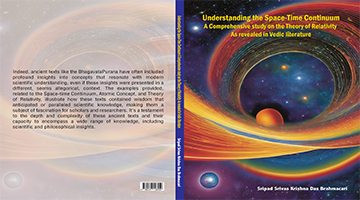
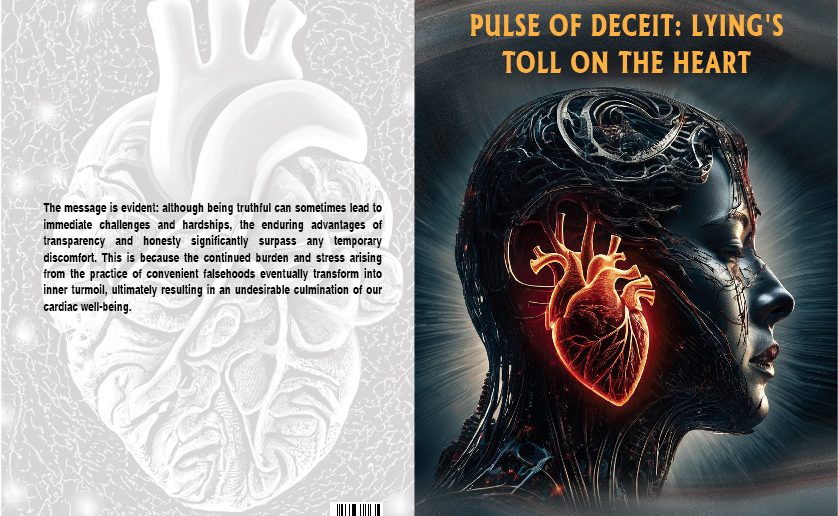

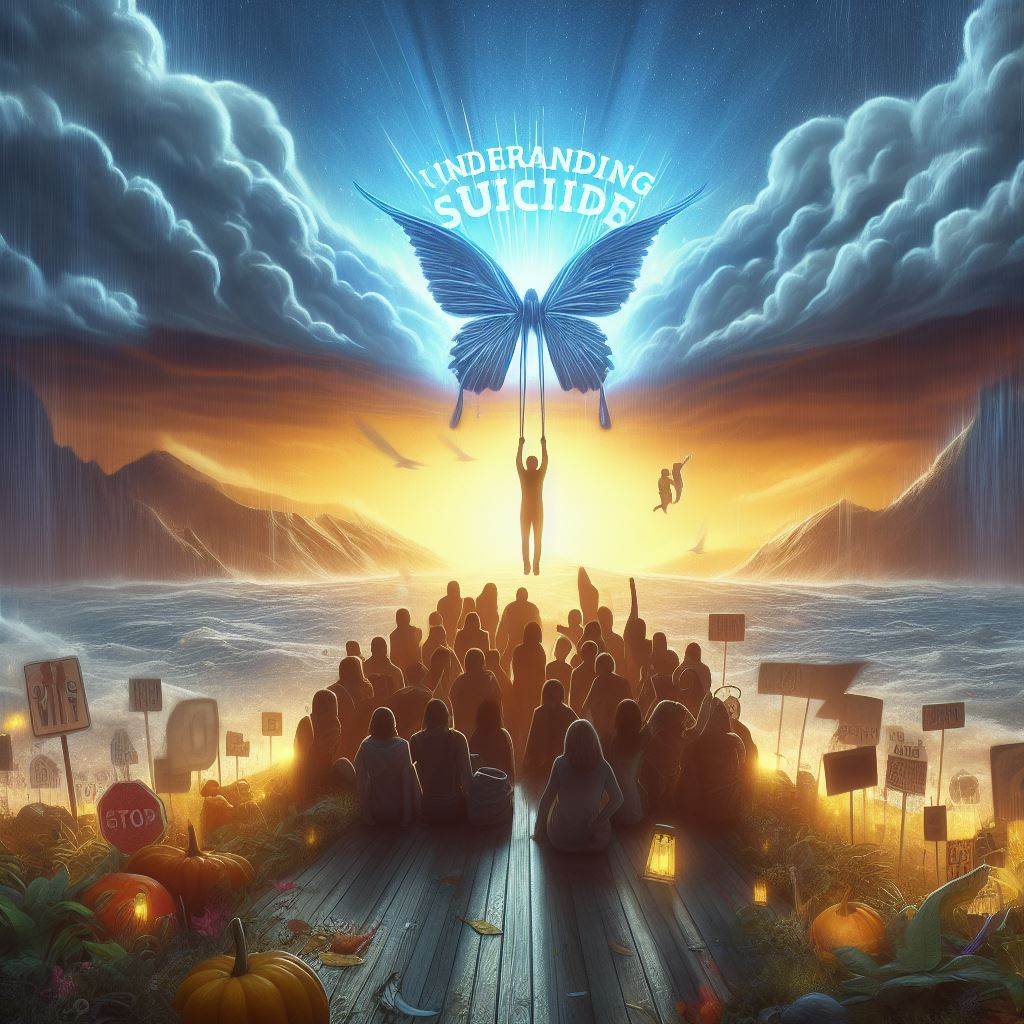









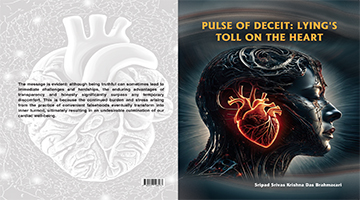

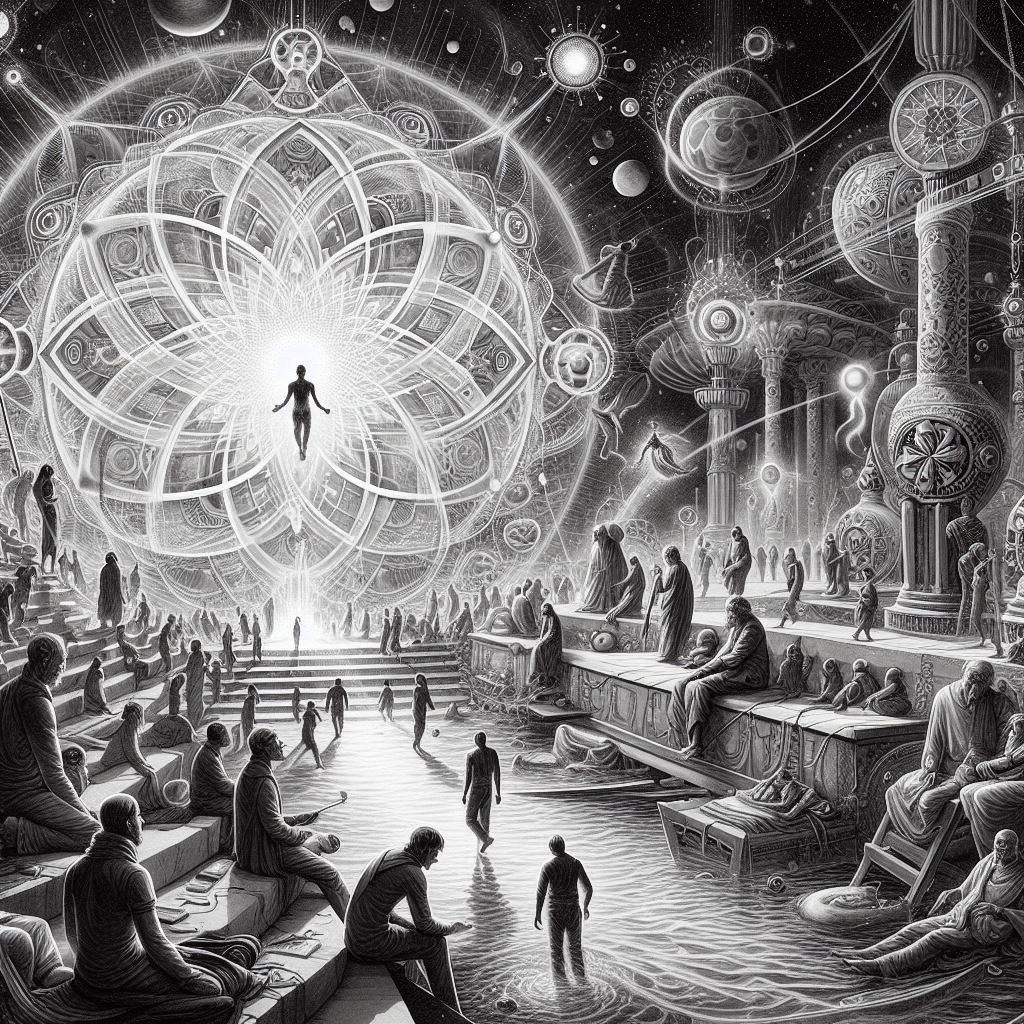
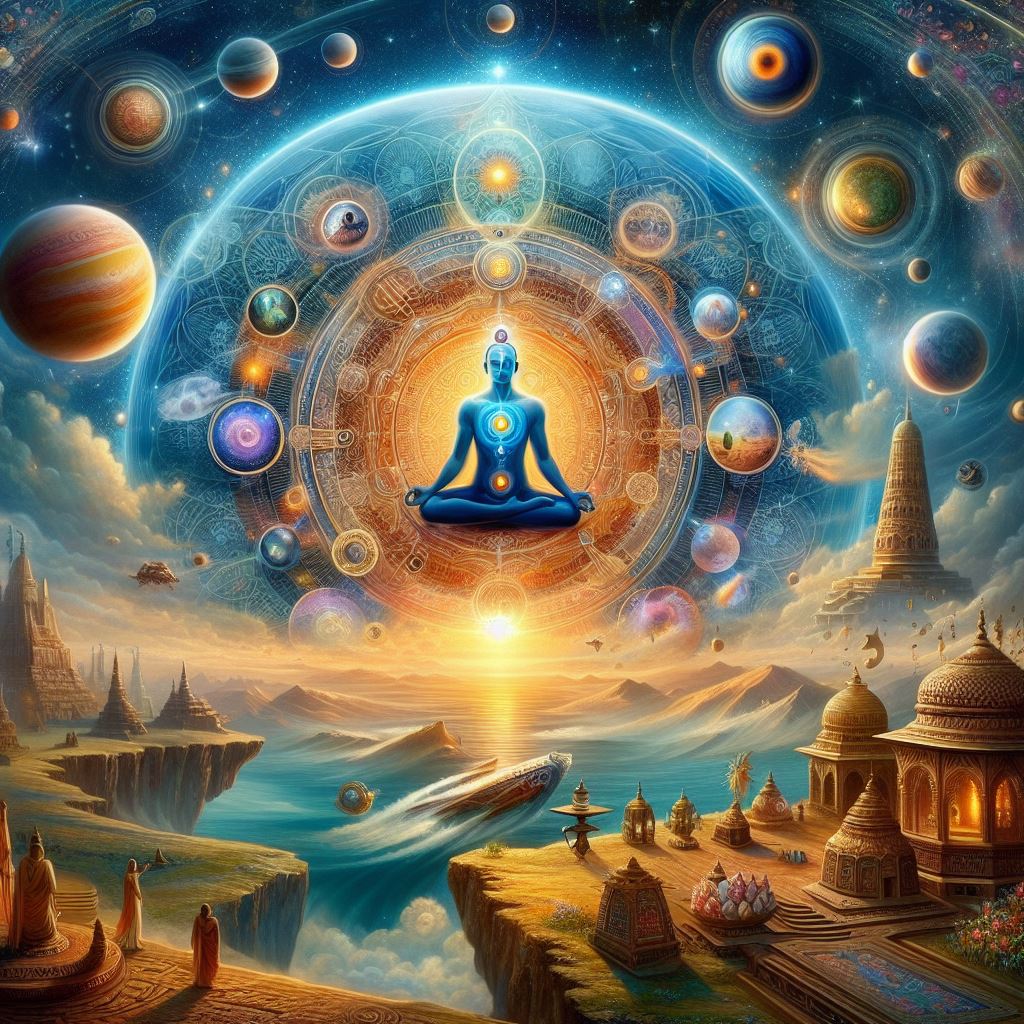



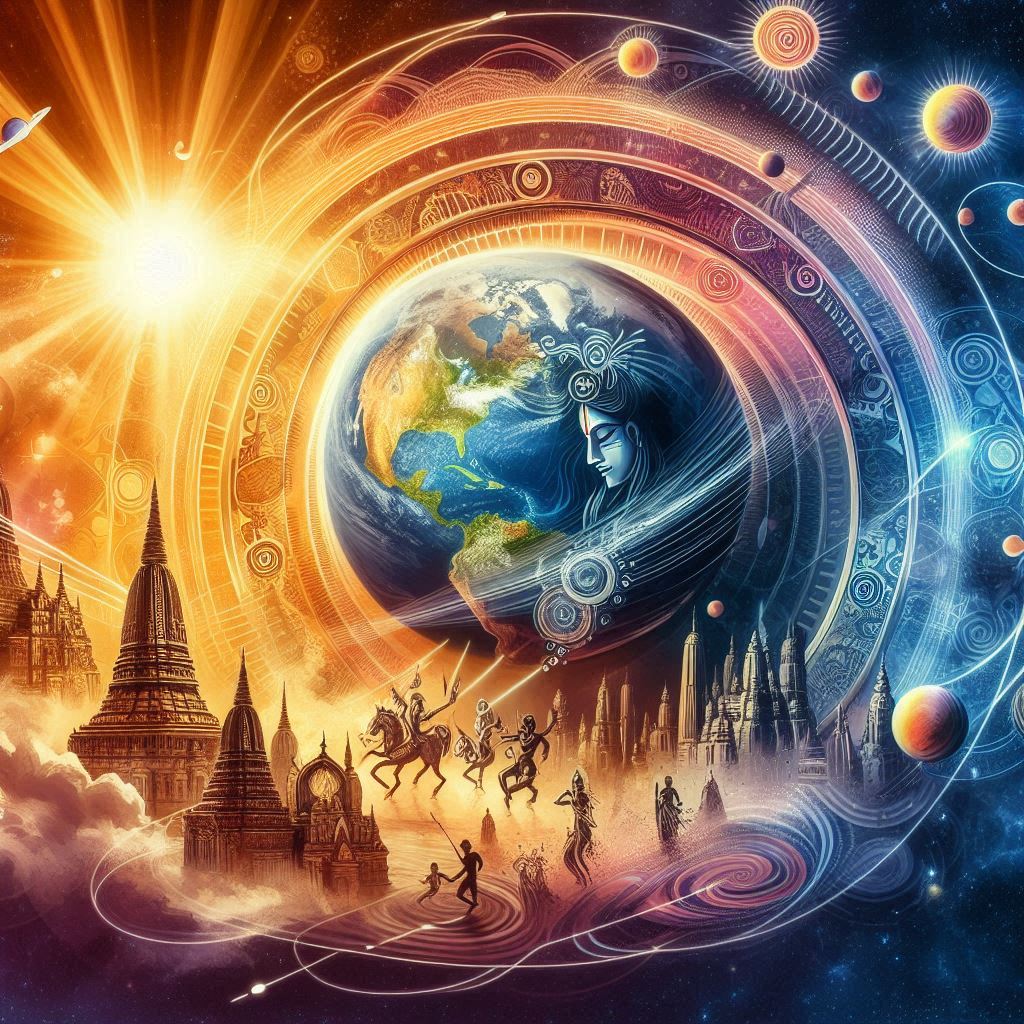
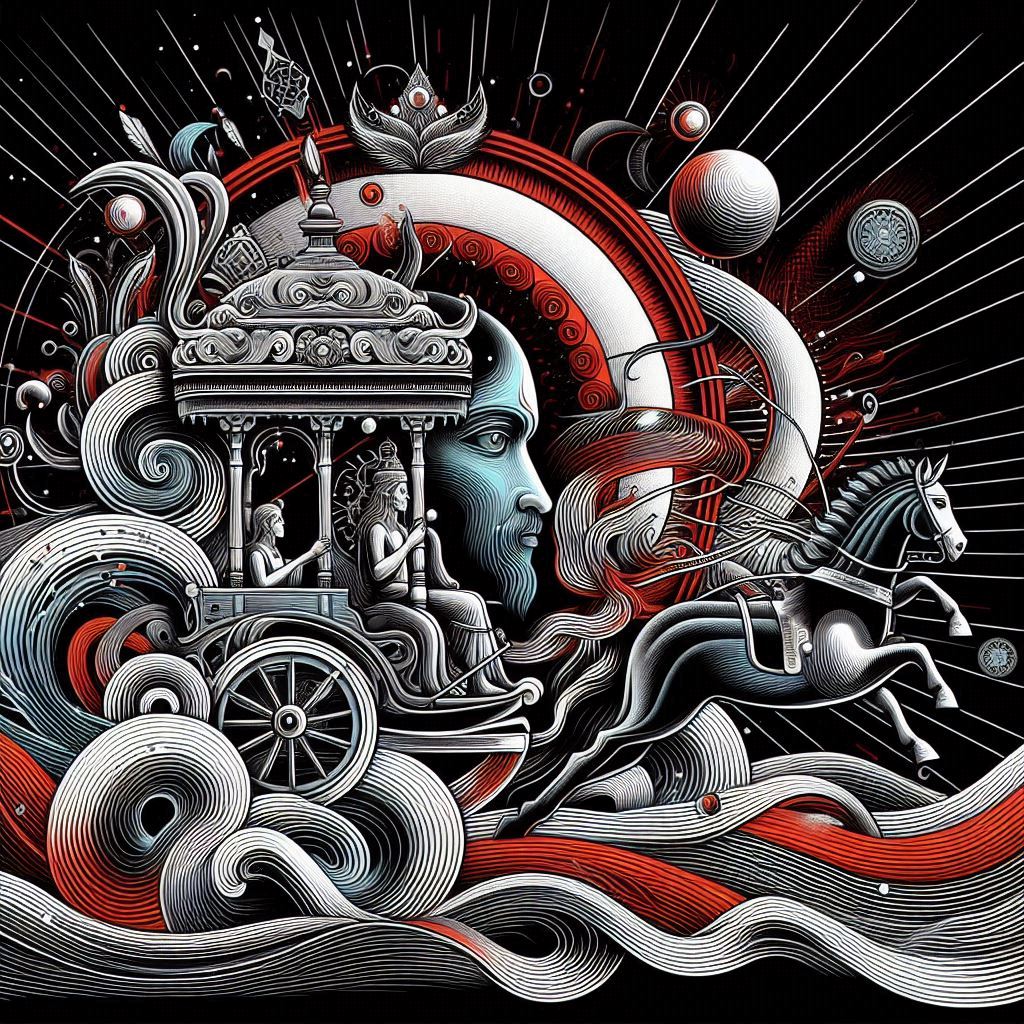
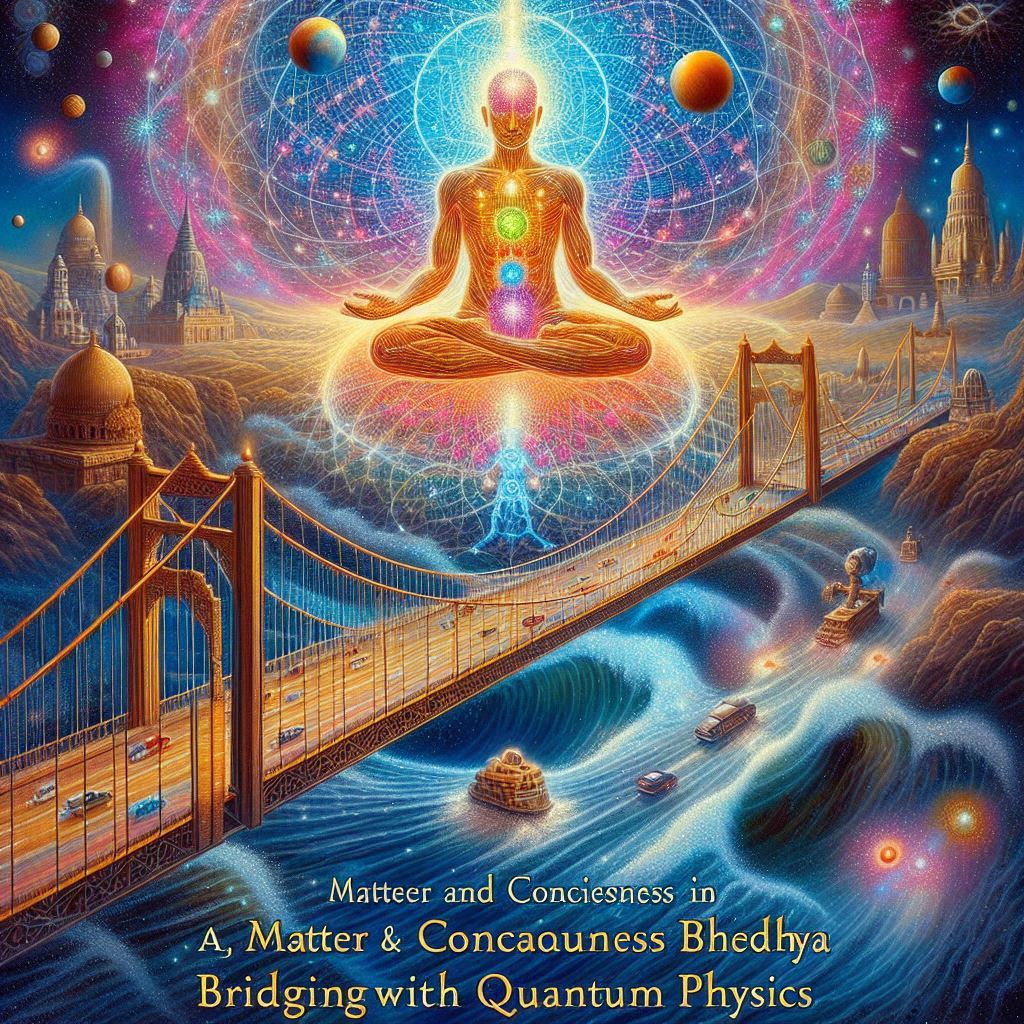
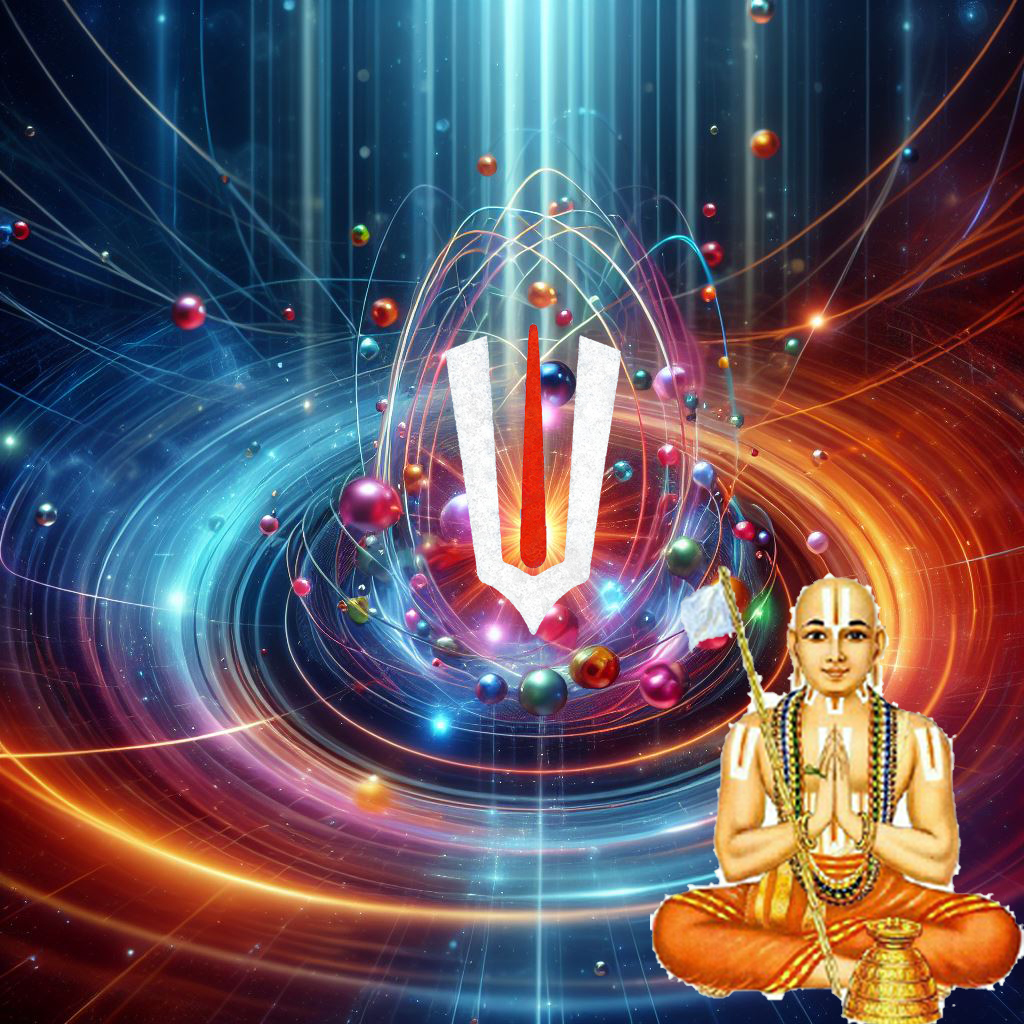
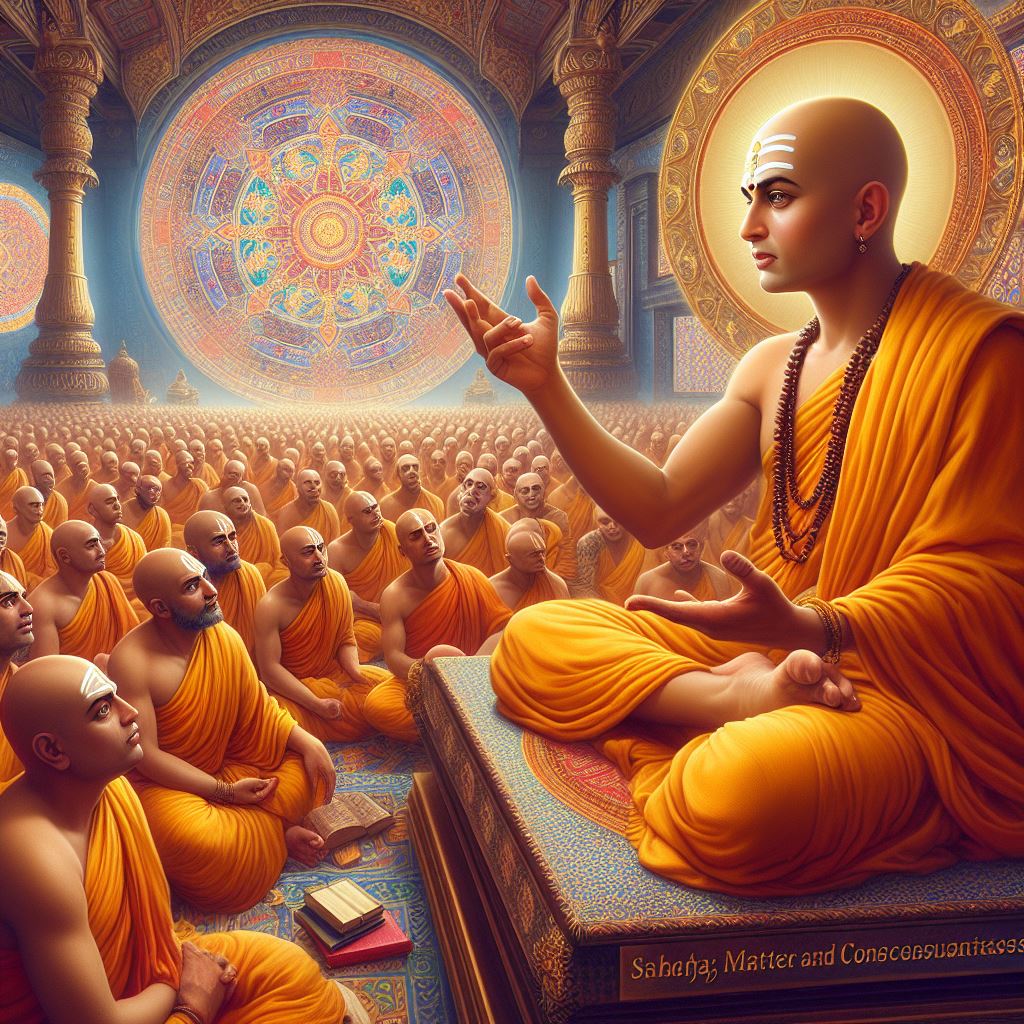
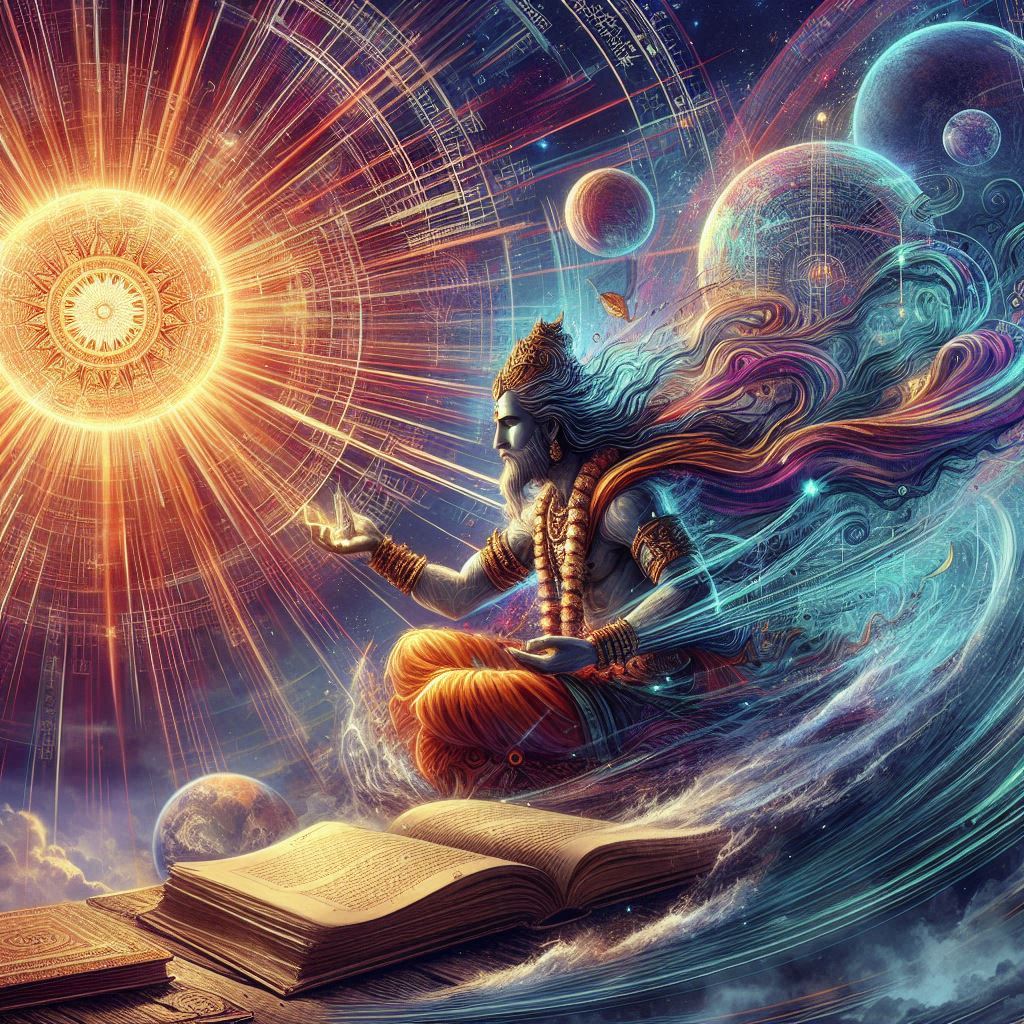
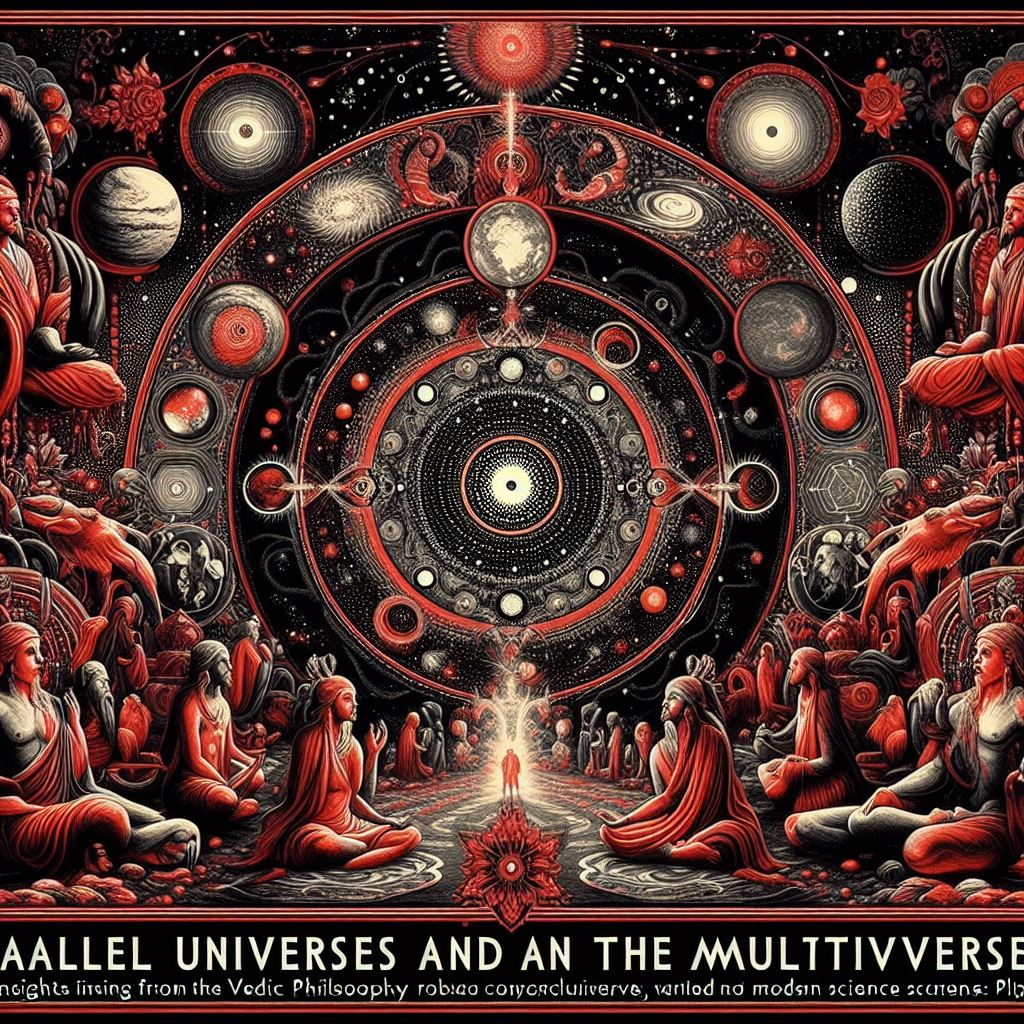
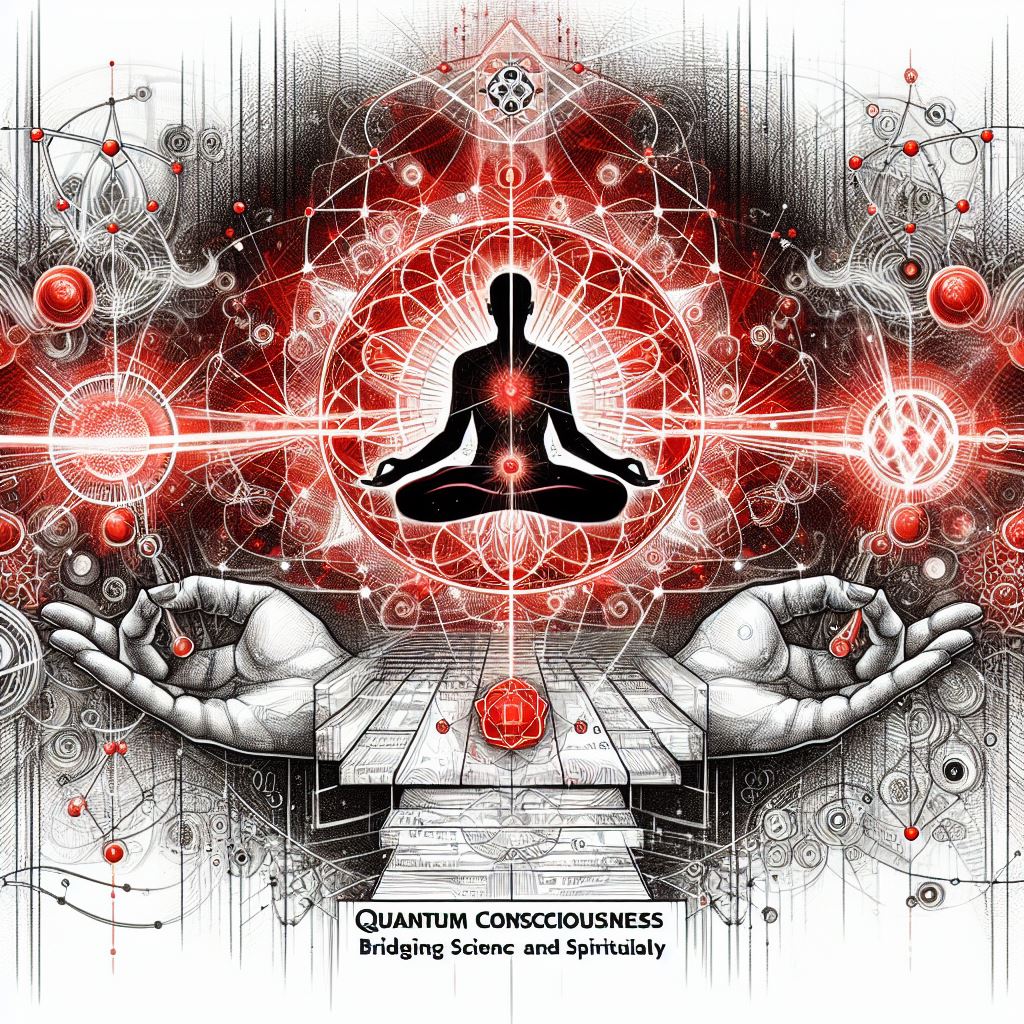
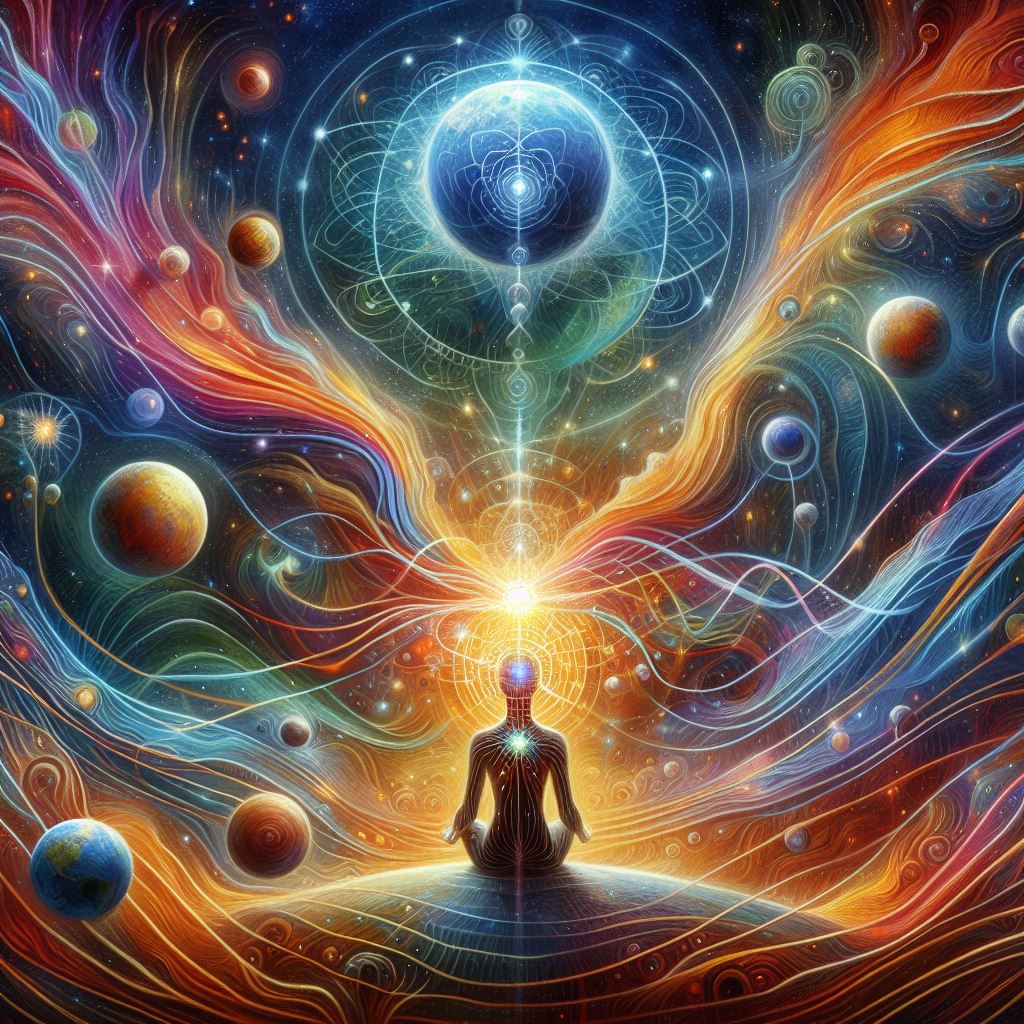
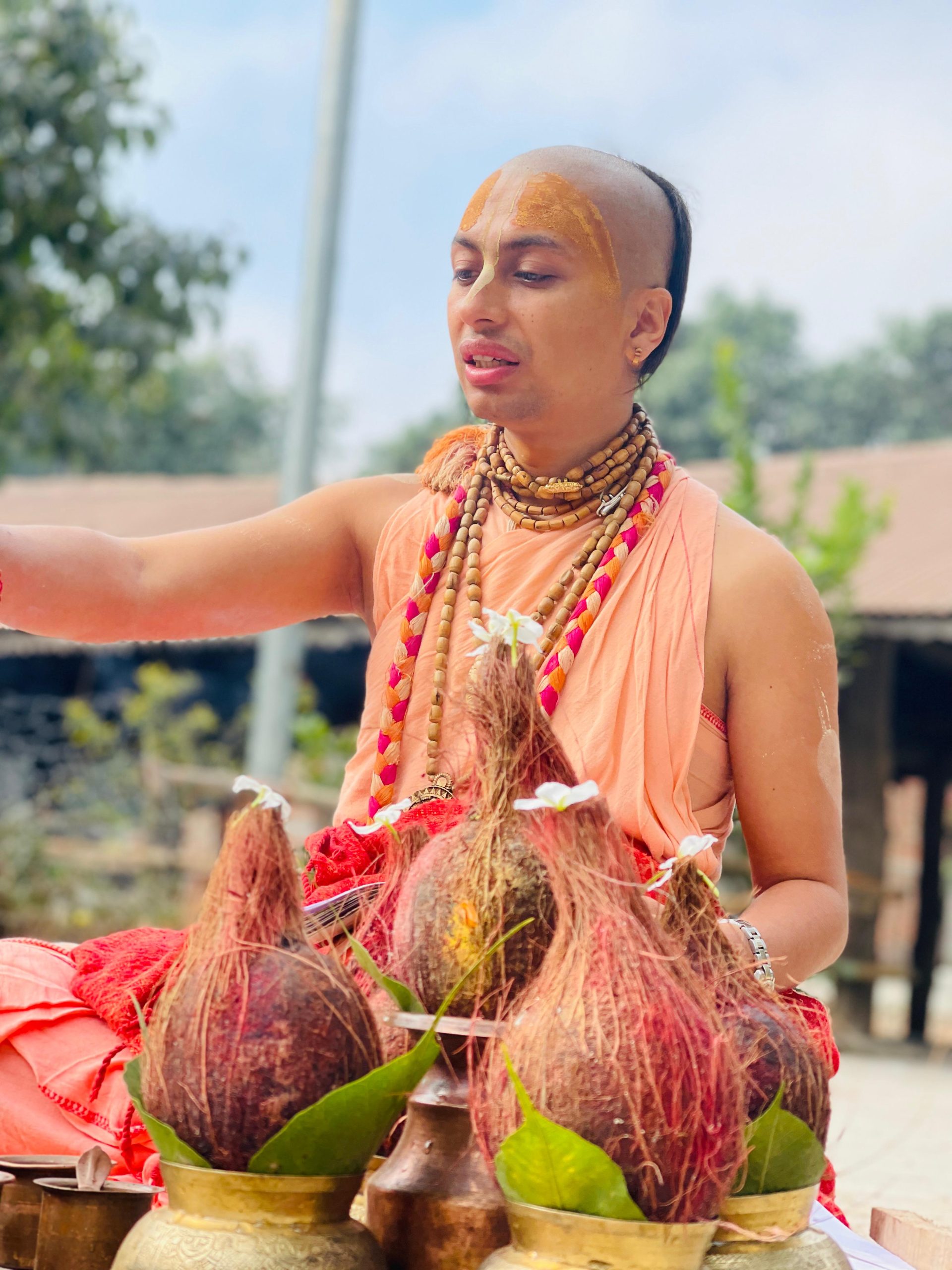
Origin of Science
Temporal Relativity in Vedic Literature: An Interdisciplinary Analysis of Time Dilation Narratives
Acharya Kaṇāda: The Ancient Sage Who Discovered the Atom
Evidence of Vedic Sanātana Hinduism as a Global Dharma
Perception of Quantum Gravity and Field Theory in the Vedas
String Theory as Mentioned in Veda
Sanskrit’s Role in Advancing AI: A Comprehensive Study
The Vedic Model of the Mind: A Contemporary Exploration
Vedic Contributions to Geometry: Unveiling the Origins of Mathematics
Matter and Consciousness in Achintya Bhedābheda: Bridging with Quantum Physics
A Comprehensive Study of Aeroplanes and Aviation in Vedic Literature
Hydrology and the Water Cycle in Vedic Scriptures
Vedic Insights on the Speed of Light